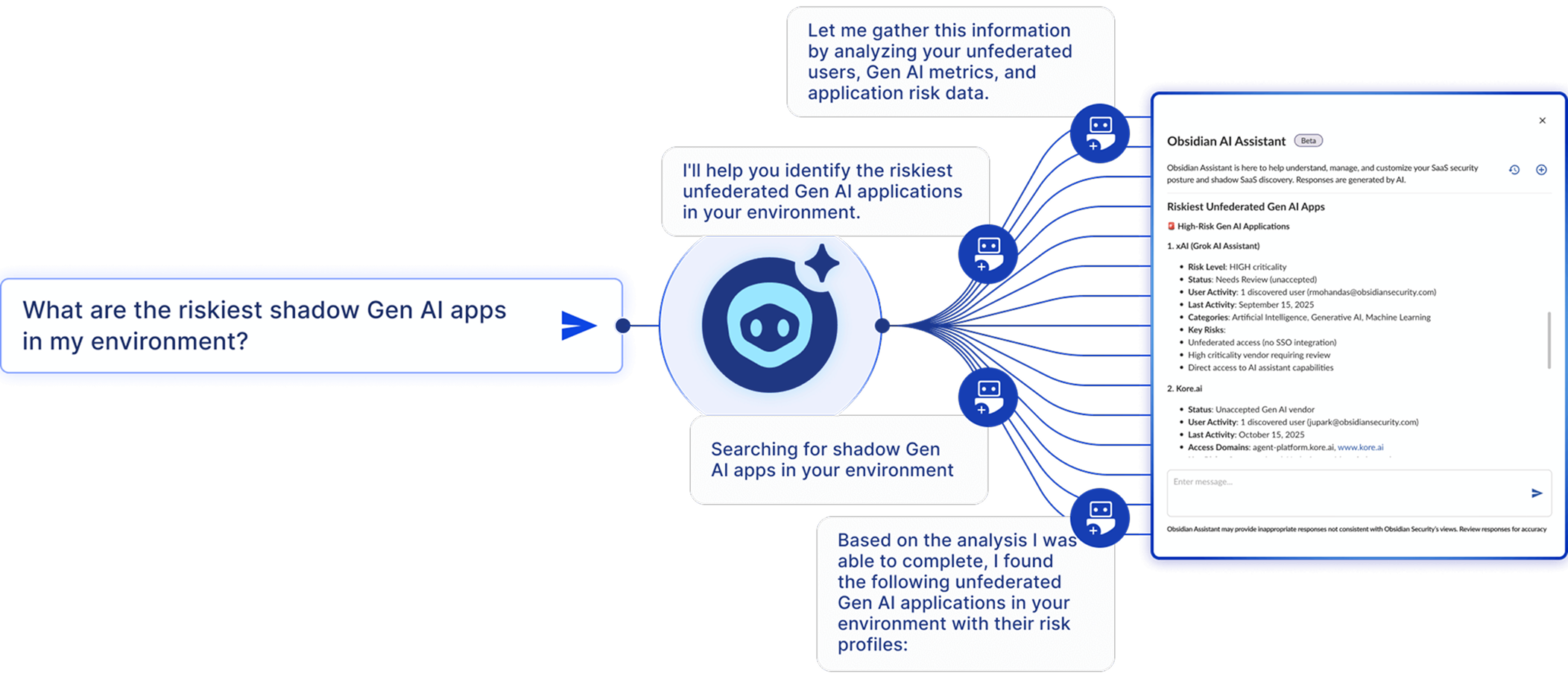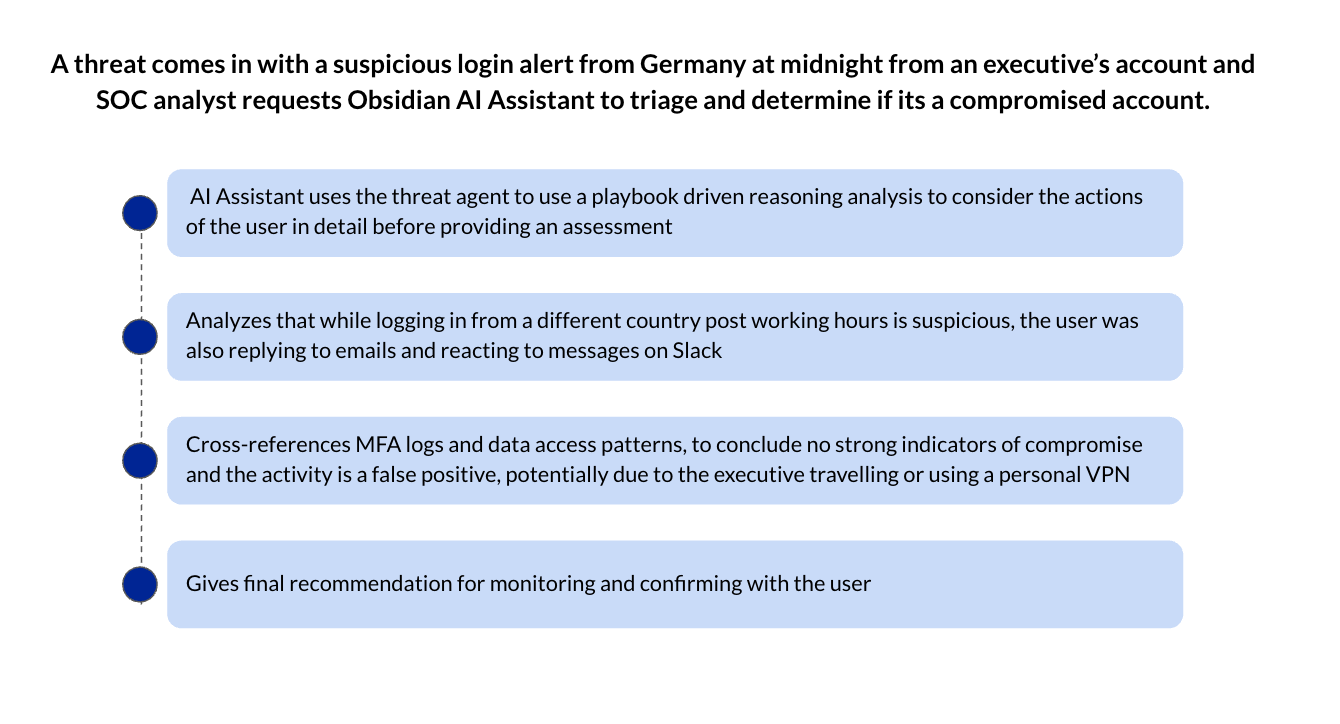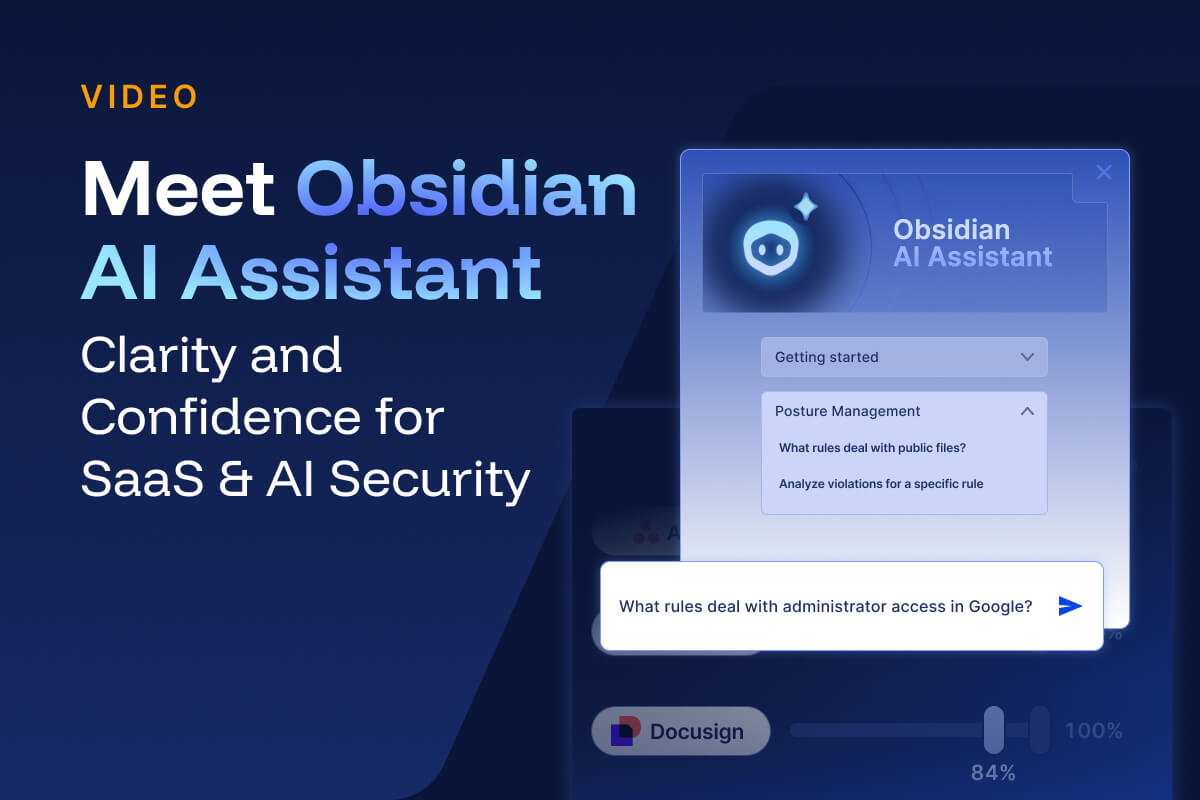Why a Security AI Assistant is so important now
The explosion of SaaS and AI tools has created unprecedented complexity: countless shadow apps, integrations, and non-human identities all requiring protection. Security teams have access to multitudes of data but struggle to contextualize it or remediate effectively and consistently. Obsidian AI Assistant fills this gap to restore clarity, prioritization, and offers guided remediation, becoming an extension of your security teams.
Introducing Obsidian AI Assistant
Imagine if your SOC team had an always-on team mate, one that could comb through data in your system to explain complicated security jargon in simple language, tell you which alerts or violations you need to focus on and simplify remediation. That’s exactly what Obsidian AI Assistant was built to do.
Obsidian AI Assistant is a governed, multi-agent system, designed to bring clarity, speed, and confidence to SaaS security operations. When a user asks a question, it intelligently connects to the appropriate specialized AI agents to deliver fast, accurate and trusted answers.

Here are some of the agents that work together to assist your security team:

Key Use Cases:
Make complex posture rules clear and accessible to all
With every new SaaS app added, security teams have to quickly learn how to secure hundreds of apps - each with different configurations, permissions and risks. For new hires or junior analysts joining the team, understanding which rules apply to which risks and why they matter can be overwhelming. This creates delays in onboarding and increases dependency on senior team members.
Scenario

New hires can self-serve explanations of posture rules instead of relying on senior teammates, accelerating onboarding and reducing friction. Analysts get a prioritized list of violations tied to sensitive data, along with actionable next steps. Managers see which users are repeatedly creating risks, while non-security teams get clear, mapped explanations of policies. The end result: faster remediation, stronger posture, and better alignment across security, IT, and compliance.
Cut through multiple alerts and accelerate threat response and resolution
Security teams lose hours triaging countless false positive alerts and gathering context across multiple data sources, only to reach inconsistent or inconclusive results. This slows down response times, frustrates teams, and increases the risk of missing true threats.
Scenario

With AI Assistant, false positives are drastically reduced, saving teams significant amounts of time and reducing mean time to resolutions. The net effect is a force multiplier: SOC teams resolve more incidents per analyst, operate more efficiently, and scale their impact without the need to expand headcount.
The Obsidian Advantage:
Many tools promise to reduce noise or automate workflows, but Obsidian AI Assistant goes further by combining governance, context, and intelligence in a way no other assistant can. It is purpose-built for SaaS security, not a generic copilot, to provide your team with speed, clarity and confidence as they protect your SaaS and AI environments.
At the core is the Obsidian Knowledge Graph, which ingests and correlates rich data: from activity logs and IdP patterns to integrations, API usage, and non-human identities. This deep, interconnected context is what gives AI Assistant its strength: enabling it to understand how risks relate across apps and users, explain rules clearly, prioritize violations by real impact, and investigate threats with precision. Unlike competitors that rely only on surface level configuration data, Obsidian delivers true context - turning isolated signals into actionable security intelligence.
Obsidian AI Assistant is enhanced by the industry’s largest SaaS breach data repository, grounded in insights from hundreds of Incident Response engagements. Real-world threat data informs detection accuracy, while activity insights validate that posture policies are enforced where it matters most - in practice.




